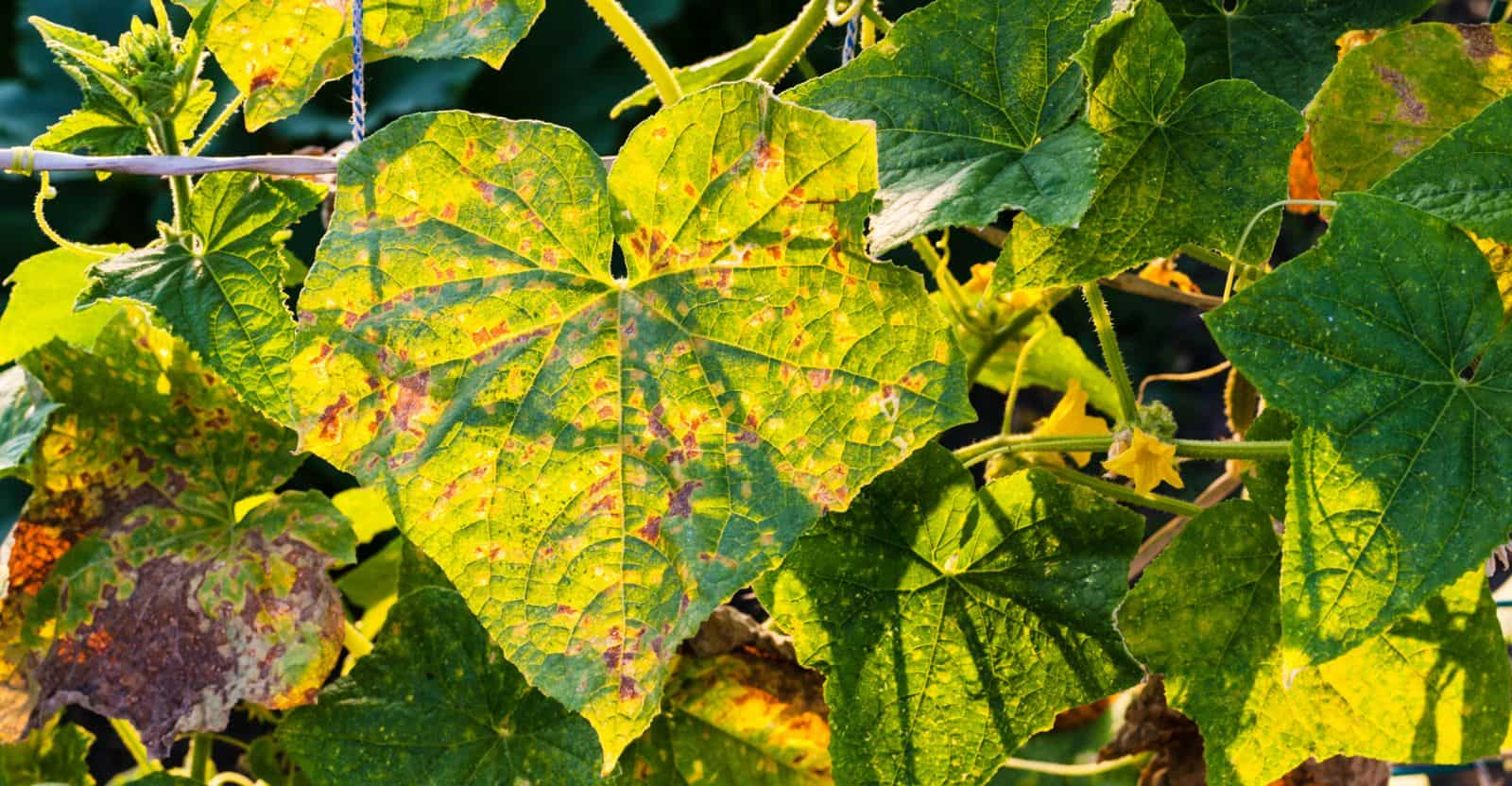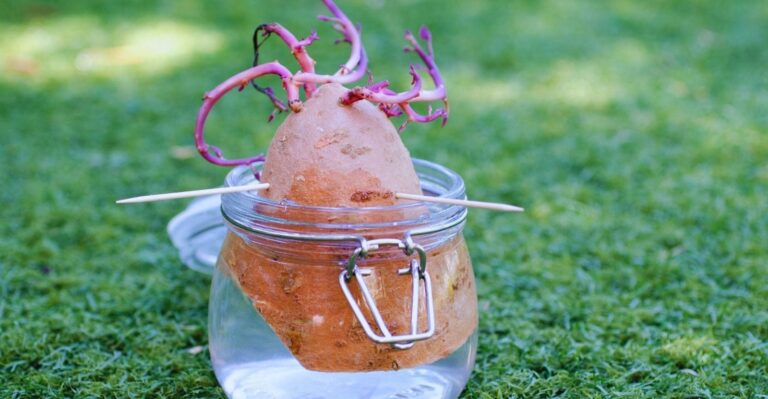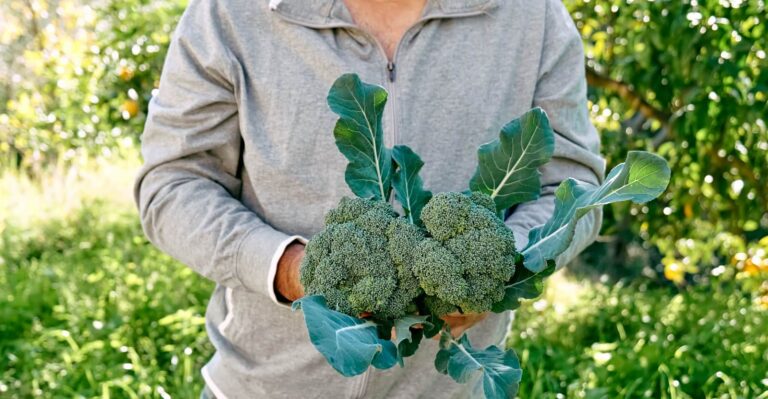Amazon has put together some great Home Gift Deals – save money and get your shopping done at the comfort of your home! Click here to see deals on Amazon
If you’re growing cucumber and find that the cucumber leaves turning yellow, it means that the plant is stressed.
Cucumber needs a warm, sheltered, sunny site to grow appropriately. You can also grow cucumber in growing bags or large containers in a sunny part of the garden in the USDA zone of 2-11.
The main reason for cucumber leaves turning yellow is pest attack, infection with disease, nutritional deficiency, improper watering, and lack of sunlight.
We’ve covered these issues in-depth and the ways you can fix the problem.
Most of the time, there is an easy fix after identifying the cause of the problem.
Let’s get in.
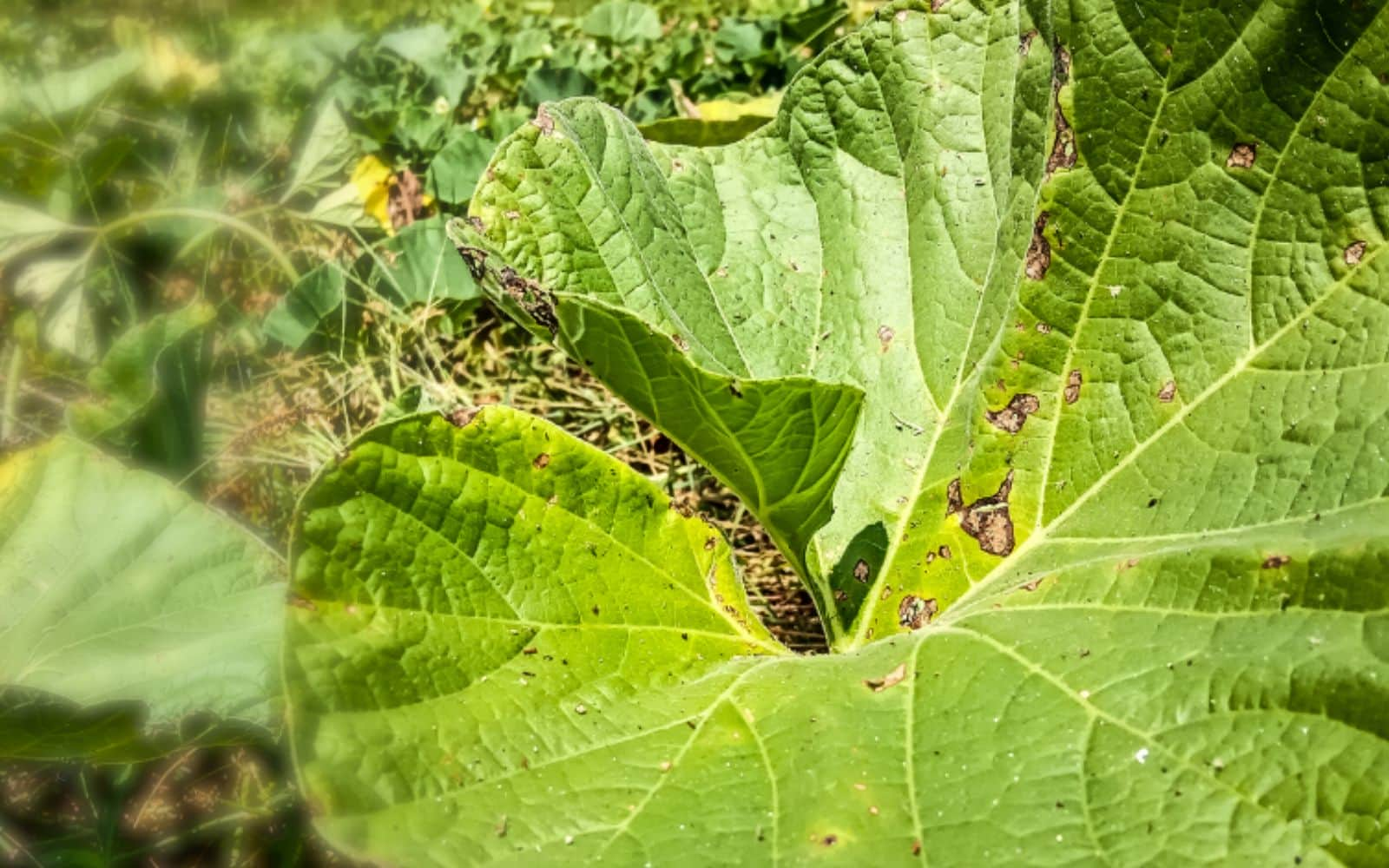
Why are cucumber leaves turning yellow?
There are several reasons for leaves to have yellow spots. But the fundamental change happening in the cucumber leaf surface is that there is a lack of chlorophyll.
Chlorophyll is responsible for the green color and helps plants convert sunlight into energy.
When the plant undergoes some stress, it loses the ability to produce more chlorophyll.
Lack of chlorophyll causes chlorosis disease that reduces the green color and generates yellow spots over leaves and crowns.
You may also see the light brown streaks or severe curling of the plants.
There are several reasons for the plant to get stressed. Here are some of the most common causes.
Pest attacks on leaves
Cucumber has soft juicy leaves that make it attractive to pests such as Downy Mildew or Whitefly.
These pests attack the plant and munch on the soft, delicate leaves that cause the plant’s shock.
Most pests aren’t exclusive to cucumber plants, but keeping an eye on them can help you prevent them from damaging plant veins.
Striped Cucumber Beetle
Cucumber beetles can attack the cucumber at any stage of growth. It directly strikes the roots, leaf surface, and male or female flower of the plant.
The damaged root causes the plant to not pass the required nutrients from the garden soil and causes brown spots on leaves.
Moreover, it spreads the plant’s bacterial wilt disease that causes the surrounding plants to get infected.
You can know if the plant is infected by wilt disease by inspecting it closely and seeing a white sticky substance oozing from the stem.
There are several options to prevent the disease, and unhealthy leaves are telltale signs that the plant is sick.
Cucumber is sensitive to chemical pesticides. Make sure you follow the instructions correctly.
Aphids
Aphids are a widespread pest found in both ornamental and vegetable gardens.
These are soft-body insects that feed on sucking the nutrients from the plant leaves.
They grow very fast and, if not treated, can quickly overwhelm the plant.
If you find aphid infestation on the edges, you can get rid of it by spraying the plant with cold water.
Another option is to sprinkle soap-water mix with neem oil or cayenne pepper.
Spider Mites
Spider mites cause the same kind of destruction as aphids. They attack not only cucumbers but also other indoor and outdoor plants.
These are reddish-brown and have a tiny oval-shaped body. If you shake the plant, you will see a cloud of small insects on the plant.
You can usually find them undersides of leaves. To control it, you can either remove the infected leaves with a trimming scissor or use pesticides to spray on the plant.
Potato Leafhoppers
Potato leafhopper is a small body tiny insect that feeds on the soft leaves and foliage. It infects over 200 different types of plants, including cucumbers.
The feeding of potato leafhopper on cabbage leaves causes stipple (light dot on leaves). Eventually, leaves and foliage turn yellow and stunt plant growth.
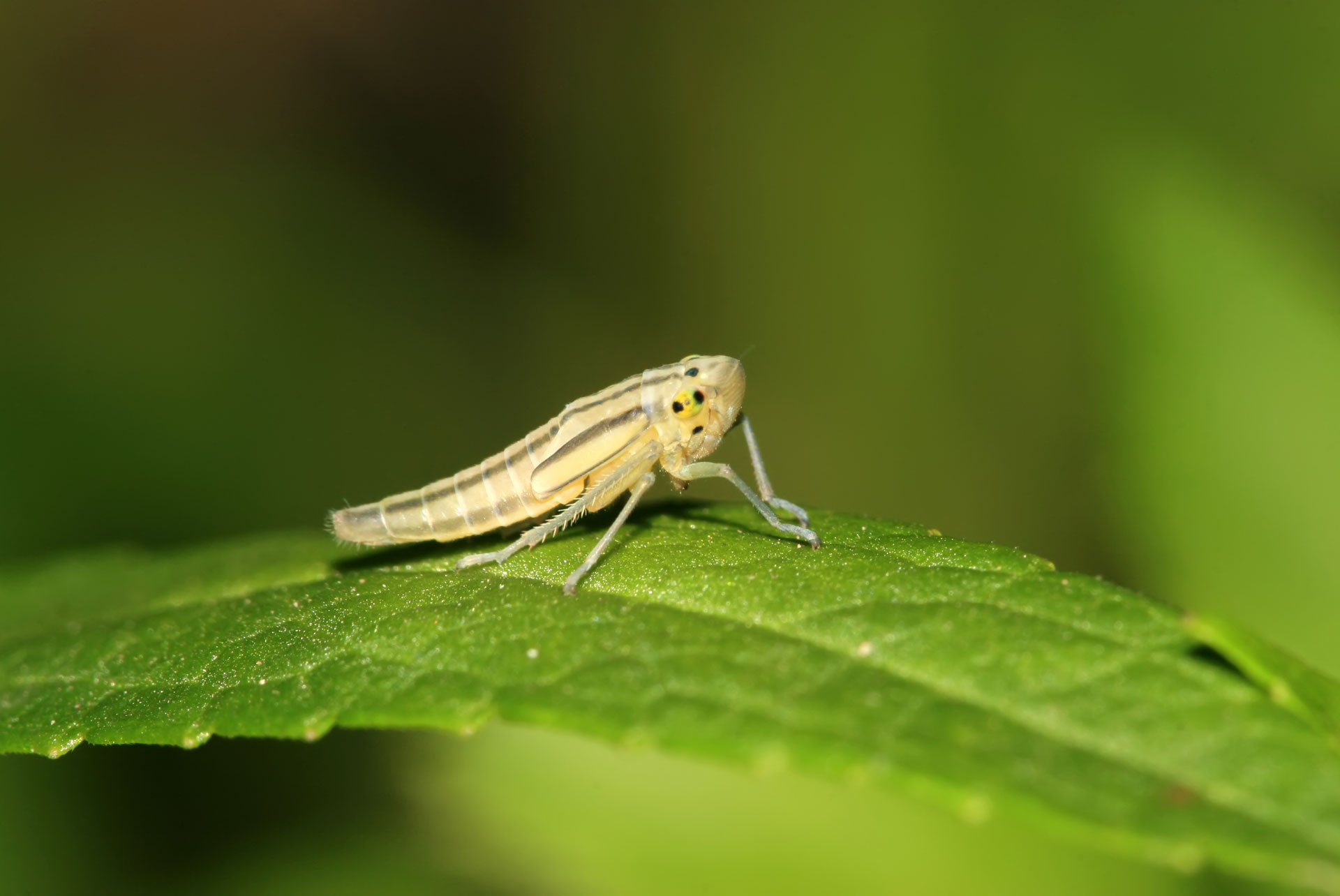
Leafhopper also releases a toxin into the leaves during the feed. It causes the leaves’ tips and margins to curl upward. If not treated, the yellow spots on leaves turn brown and fall off.
You can use natural predators such as ants and ladybugs, use insecticidal soap or fungicide to prevent this.
Other insects such as leaf miner larvae make holes inside and cause significant damage to the leave.
You should keep the surrounding area free from plant debris and weeds to prevent these pests from laying eggs.
Cucumber plant disease
A plant infected by bacterial and fungal diseases causes stress to the plant and turns leaves yellow.
Powdery mildew is often a problem in the summer that weakens the plant.
You can follow the proper watering schedule and fertilization with good air circulation to roots to prevent the disease.
The cucumber mosaic virus is deadly. It causes the leaves to change yellow and eventually kills the plant in its growing stage.
The infected leaves with powdery mildew or other virus get mottled with a yellow mosaic patterning, and the plant becomes stunted and die.
There is no cure other than to remove diseased plants and destroy affected vegetables. You should plant disease-resistant varieties of seeds in your garden.
Treat the soil for any fungal spore that can spread plant diseases through cucumber beetles or other infested plants.

Nutritional deficiency
Plants need balanced nutrients to grow fully. Nutritional deficiency such as nitrogen deficiency and zinc deficiency in the soil causes the leaves to become yellow and pale.
If you don’t provide adequate nutrients to the plant, it may die. You can overcome nutritional deficiency by following a proper fertilization schedule.
Use a slow-release fertilizer that has balanced nutrients. Yellow leaves indicate a potassium deficiency in the plant. It also prevents the turning of female flower pollen into fruits.
The other often overlooked nutrient deficiency is the lack of magnesium in the soil. Cucumbers are heavy feeders.
If soil is devoid of organic matters, it causes the magnesium deficiency needed for the cucumber growth.
You can spray Epsom salt on the yellowing plant. Epsom salt contains magnesium sulfate that gets quickly absorbed by the leaves and boosts the plant’s health.
Mix two (2) tablespoons of Epsom salt in 1 gallon of water and spray it over the leaves.
Zinc and iron deficiency in the soil may also cause the leaves to turn yellow. We have found the cucumber fertilizer 8-16-36 to work perfectly in providing essential nutrients to plants.
It’s specially formulated for cucumber and is water-soluble, which makes it easy to apply.
The iron deficiency causes the leaves to turn yellow without affecting the green veins of the plant.
The other good option at planting time is to use 6 10 10 fertilizer or add granular chelated iron around the soil with a compost layer.
Adding sulfur to the soil makes it a bit more acidic and disease-resistant. Balanced fertilizer helps the plant to bear more fruit production.
You can also plant a cover crop to overcome any nutritional deficiency in the soil.
Inadequate care of cucumber plants
Cucumber plants are sensitive to external factors and need some care while growing.
Improper care causes additional stress to the plant that deteriorates the plant’s health. It turns the upper surface of leaves yellow that later turns brown.
Cold weather
Cucumbers don’t like cold weather, especially when the temperature goes below 50 degrees F with wet ground.
A cold and overly wet soil lowers the ground temperature that causing the cucumber leaf edge to turn brown and die.
If the cold temperature persists, it may cause the entire plant to wilt and becomes discolored due to the high freezing humidity level.
If you’re planting cucumber in a container, bring it indoors if the temperature gets too low.
Leaves yellowing due to water-related issue
Improper watering may result in overwater or underwater that causes root rot and deprives the plant roots of adequate airflow. Cucumber needs 1 to 2 inches of water per week.
If soil is dried, try watering it more frequently. After flowering, the cucumber needs a minimum of a gallon of water per week for several weeks.
Overwatering causes the risk of root rot or the development of fungus (Fusarium Wilt). Use a measured approach, such as wide row spacing and drip irrigation when watering cucumber plants. You can also check out our best soaker hose review for garden irrigation.
Growing cucumber in raised beds is the right way to prevent water-soaked spots.
If you’re growing cucumber in a container, ensure sufficient space for the cucumber roots to get spread, and there are no weeds around.
A root-bound cucumber plant can’t provide the required nutrients to the leaves and cucumber fruits.
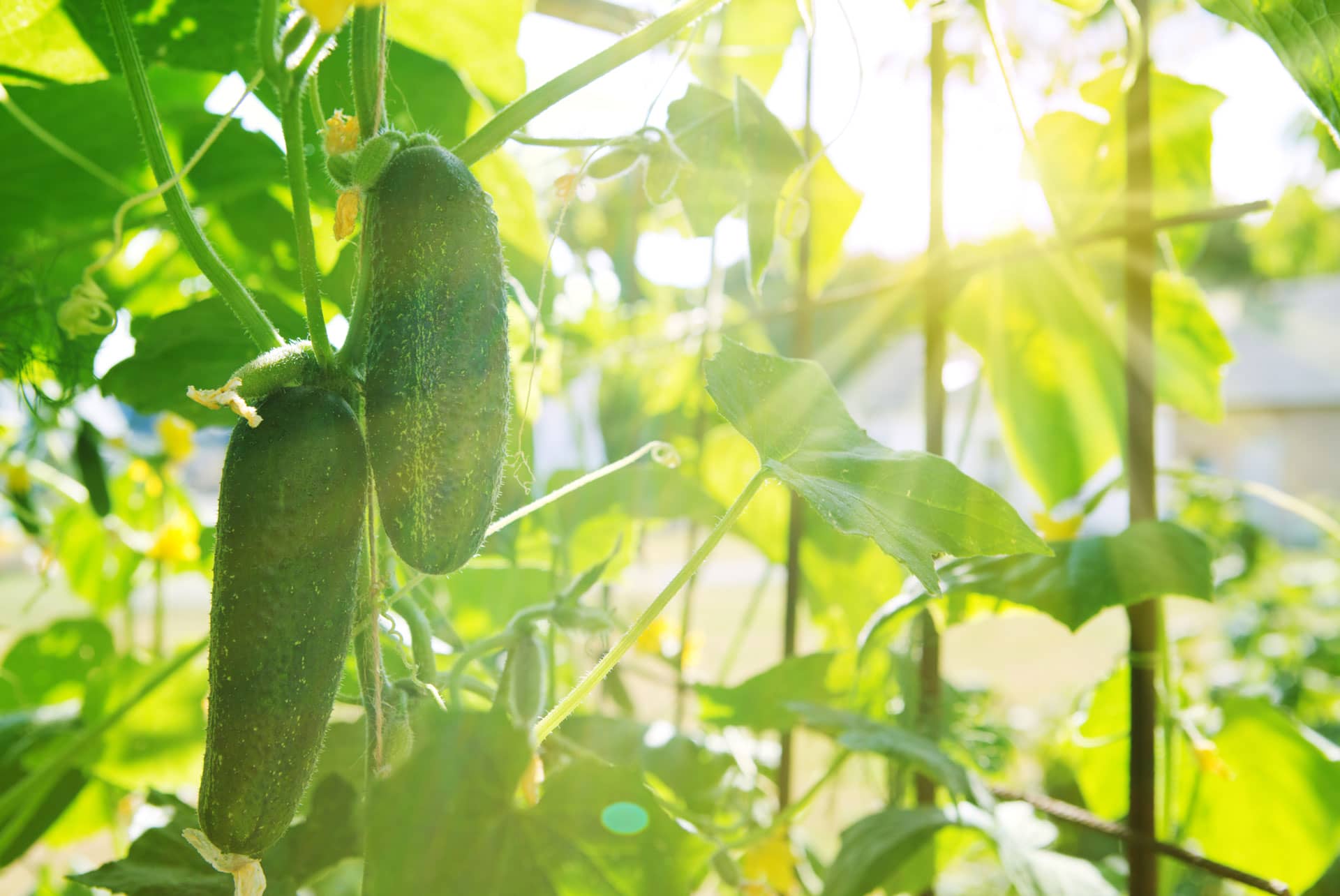
Lack of sunlight
Cucumber needs at least 6 – 8 hours of sunlight per day.
If you’ve planted it at a location where some shade covers it, check if you can move the plant where it can get adequate sunlight.
Inadequate sunlight makes the plant struggle to make the required food for itself to support the growth. This causes the plant to weaken, and green leaves become yellowish.
Can yellow leaves turn back green?
Depending on the causes of yellowing, you may or may not turn it back green. If leaves are turning yellow due to nutritional deficiency or lack of sunlight or water, you can fix the problem quickly.
But if leaves turn yellow due to pest infestation or bacterial and fungi attack, it’s often difficult to turn them back to green.
In that case, you should cut the yellowing leaves and dispose of them safely to prevent the spread of disease or pests to other plants.
How do you fix yellow leaves on plants?
To fix yellow leaves on plants, you need to identify the cause of yellowing. You should first check any apparent pest and disease signs at the upper surface and under the leaves.
You should look under the leaves for small insects and try to identify their variety. You can use organic methods such as soap-mix neem oil or insecticide to stop these pests’ spreading.
Often this brings the plant back to life, and you will see new growth coming up. You can also add a single tablespoon of ammonium nitrate once it flowers.
If there is no infestation, you should check if the plant is getting good care. Check for a consistent watering schedule and sunlight.
Check the soil and, if required, amend it with a 2-inch layer of natural organic materials.
It can provide balanced nutrients to the plant with good air circulation to oxygen-deprived roots.
Is MiracleGrow suitable for cucumber?
MiracleGrow provides the essential nutrients required for the growth of cucumber. It helps with the flowering and strengthens foliage.
You can use Miracle grow water-soluble plant food, which is specially formulated for vegetable gardening. It’s easy to use, and you can apply it after mixing it in a watering can or using a garden feeder.
You can feed it every 7-14 days when the plant actively grows. It helps with the flowering, and you get bountiful cucumber for the salad.
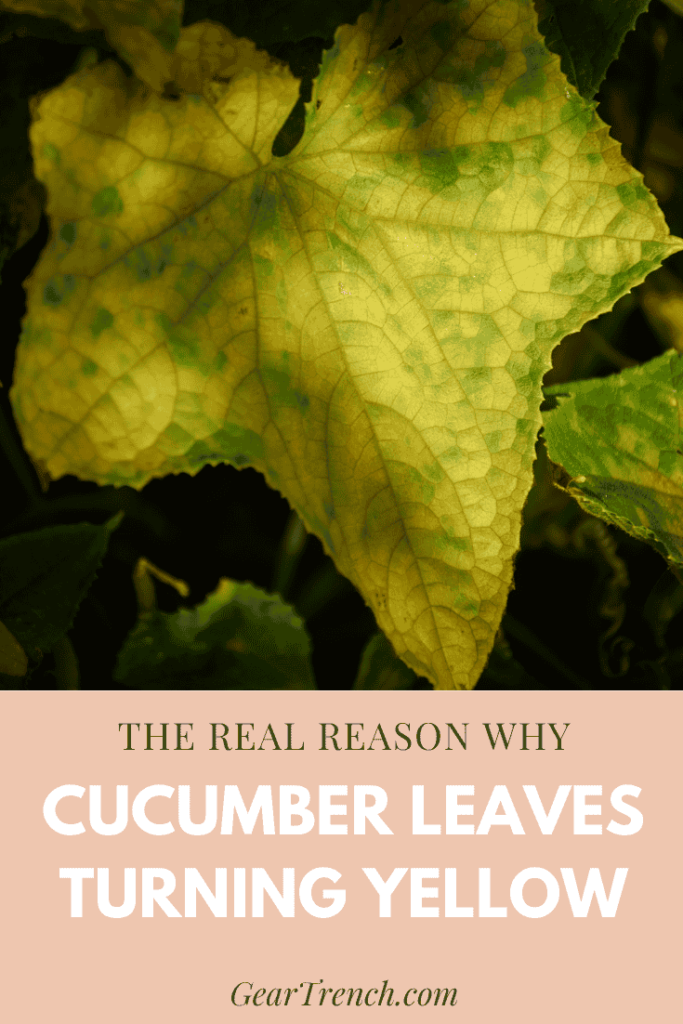
Don’t forget to share this post

